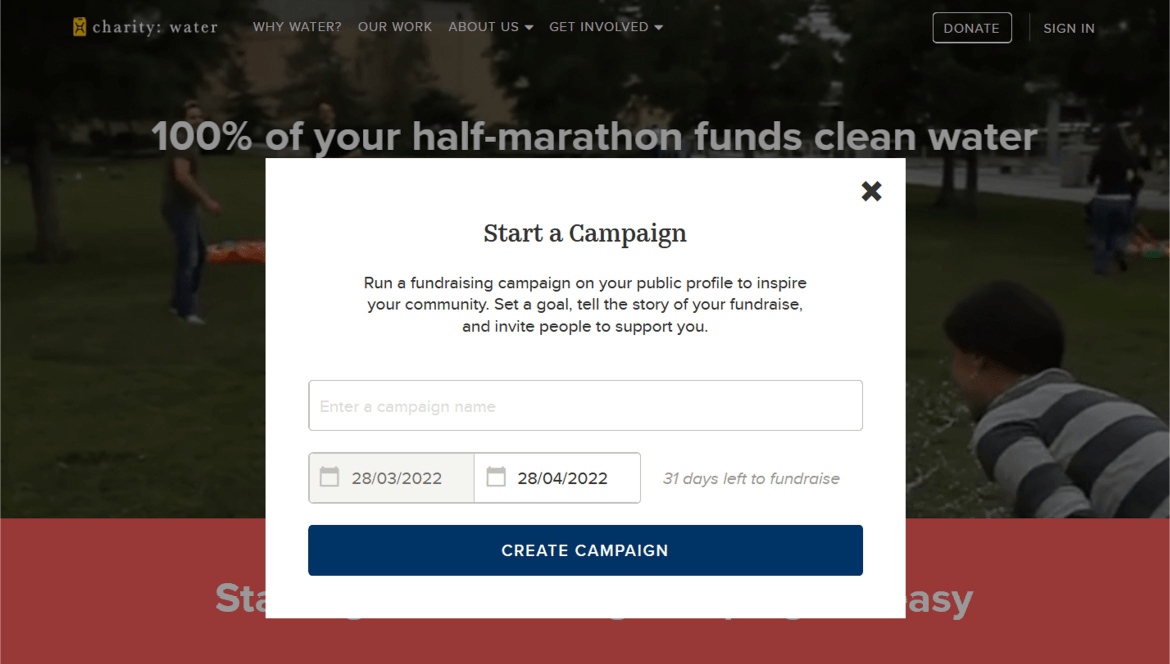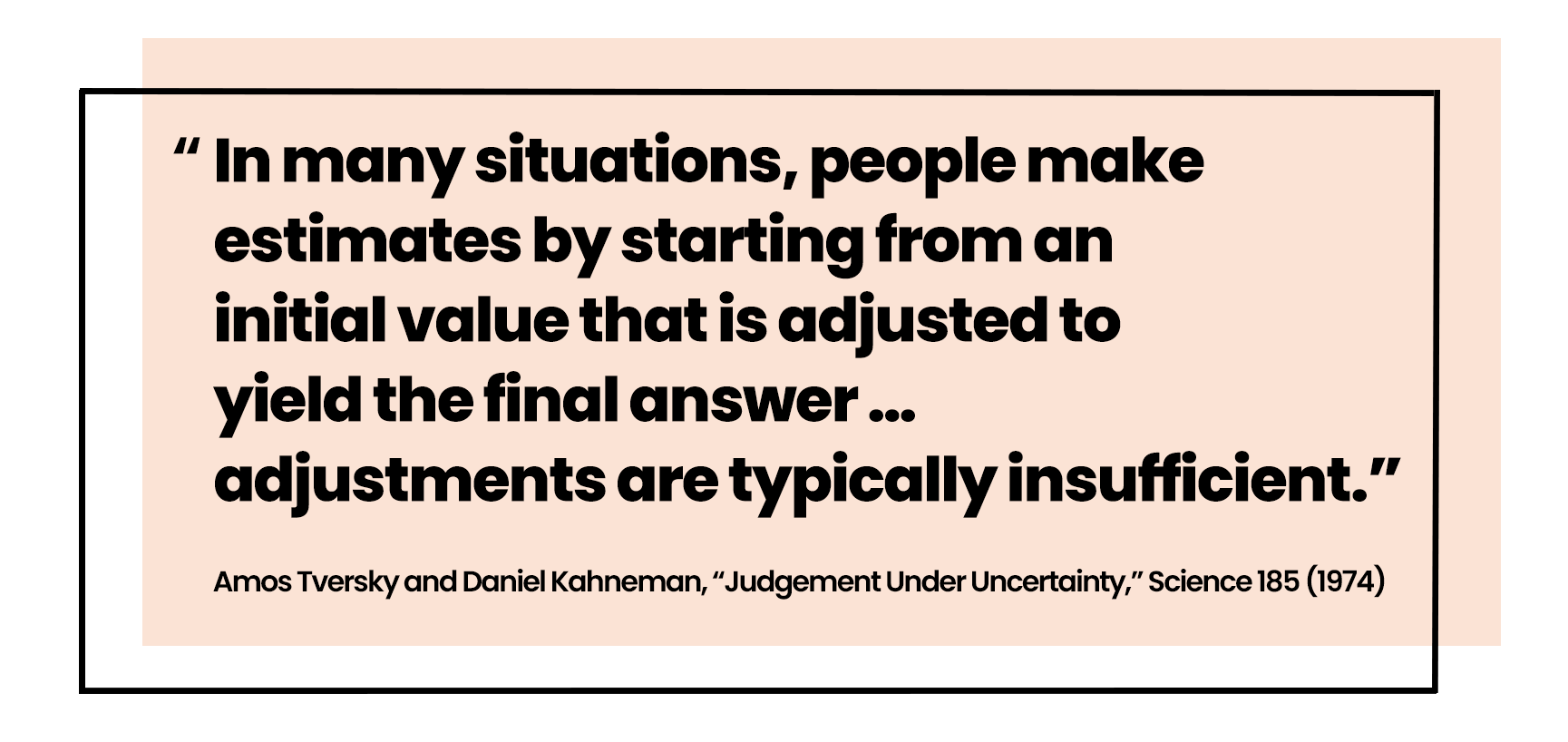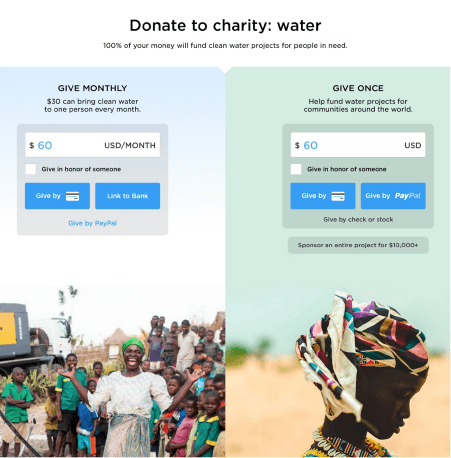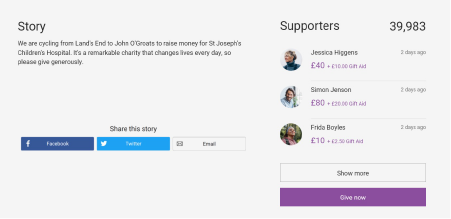
How Behavioural Science helps Charities Increase Online Donations

By Stephen Courtney|11 May 2022
Conversion services | 7 MIN READ
Subtle design changes can increase the size and frequency of the donations a charity website receives. As traditional fundraising practices become less profitable and marketers divert budgets to digital channels, behavioural science can help charities generate more long-term revenue.
"A/B testing and behavioural science give charities a powerful way to increase donations. However, fundraisers should resist the temptation of coercive design and instead use behavioural insights to give users the confidence to be generous when they choose to."
Stephen Courtney, CRO and UX Strategist

In the mid-90s, a team of behavioural scientists ran an unusual experiment at the San Francisco Exploratorium.1 A sample of the museum's visitors were asked two questions about a recent ecological disaster:
- Would you be willing to pay $5 to save 50,000 offshore Pacific Coast seabirds from small offshore oil spills?
- How much would you choose to donate?
When the first question set the initial bar at $5, visitors said they would choose to donate $20.30 on average. Remarkably, when increasing the initial prompt to $400, visitors volunteered a staggering average of $143.12.
Following the success of books such as Richard Thaler’s Nudge, behavioural quirks like the one demonstrated at the Exploratorium have fascinated economists and policymakers. At the same time, business websites (which have access to far larger samples than local museums) are the site of ongoing online experiments testing the behavioural impact of seemingly minor changes. However, some of the most prolific exponents of persuasive design are charities, which rely on supporters (often unconscious) choices and use behavioural science to increase online donations.
How Behavioural Science Helps Charities Increase Online Donations
See how charities are using behavioural insights to increase donor revenue. Check out the following steps to increase donations.

The Generosity Bug
Watch my talk where I spoke about how behavioural science makes giving addictive.
Behavioural Science and Online Donations
Charities provide an intriguing subject for behavioural science because supporters are not driven by costs or gains. Instead, volunteering or donating to a charity involves ethical calculations. Research groups such as the Behavioural Insights Team have shown how social signals and common heuristics can steer these intrinsic motivations in different directions.2
For example, a 2013 report based on staff at HMRC found that sign-up rates for a winter fundraising campaign rose significantly when potential donors were shown an image of colleagues who were already giving to charity. Participation grew from 2.9% to 6.4% when adding the social context.
By applying the insights from field tests to their websites and A/B testing the results, charities can systematically increase the revenue generated by landing pages and donation forms. These tests provide incremental steps toward the most effective content and reveal nuances in user behaviour. Performance optimisers can then incorporate them into broader fundraising strategies.
How Charities use Cognitive Fluency to Increase Online Donations
One of the scientists responsible for the experiment at the San Francisco Exploratorium was Daniel Kahneman, whose contributions to psychology and economics earned him the 2002 Nobel Prize in Economic Sciences. A central tenet of Kahneman’s research was the principle that individuals conserve "effortful" thought, avoiding complex tasks whenever possible. In contrast, simple activities cultivate a state of "Cognitive Ease" associated with enjoyment and trust.3 This principle has formed the basis for countless studies on the design applications of "Cognitive Fluency".4
Website designers can improve fluency by organising content to fit within the limits of faculties like working memory.5 Removing unnecessary form fields, rewriting difficult copy, and providing clear visual signposts can reduce the effort required to make sense of a webpage. Several charities have applied this principle to their newsletter forms and donation pages, generating remarkable improvements in performance.
Charity: Water, an organisation responsible for over $55 million of fundraising annually, achieved success with simplified sign-up pages for individual fundraisers. The new design made it possible for anyone starting a campaign to create a profile without setting a password and reduced the number of fields a user had to complete from 5 to 2. Testing this alternative form against the original increased clicks on the "Create Campaign" button by 34%. Subsequent testing has led to an even simpler form, with a single field for the campaign name and a calendar input.

Similarly, in 2017, Cancer Research began optimising the landing page for its annual World Cancer Day event. User research suggested that visitors were overwhelmed by "noise" and struggled to understand the page's call-to-action buttons. By reducing unnecessary distractions and removing the ambiguous buttons, Cancer Research increased the page's click-through rate by 294% throughout the campaign period.
How Charities use Anchoring to Increase Online Donations
Kahneman and Tversky first described "anchoring" in their ground-breaking 1974 paper "Judgement under uncertainty". When someone is unsure how to value something, they make an intuitive judgement by picking an available benchmark and adjusting it. Changing this initial benchmark makes it possible to influence the person’s intuition.

The incident at the San Francisco Exploratorium is an example of how using anchoring shifts perceptions of value. Another experiment conducted in the same location asked two separate groups of visitors a pair of questions about the height of redwood trees.
The first ("high anchor") group was asked:
- Is the height of the tallest redwood more or less than 1,200 feet?
- What is your best guess about the height of the tallest redwood?
The second ("low anchor") group were asked similar questions but received a lower initial benchmark of 180 feet. As anticipated, the mean estimate for the "high anchor" group was 844 ft, compared to only 282 ft for the "low anchor" group.6

Because supporters are often unsure how much to give, charities and non-profit organisations use anchor values to encourage more generous donations. Charity: Water experimented with this technique on its donation page by adjusting the placeholder text used in its free-text donation field. By (simply) changing this text from "$20" to "$60", the design team substantially increased average donations without affecting the conversion rate.
How Charities Use Social Signals To Increase Online Donations
When people are unsure how to behave, they rely on social cues for guidance. In 2006, Mathew Salganik conducted an online experiment that demonstrated how the musical preferences of over 14,000 participants were manipulated by making certain songs appear more popular than others.7
Not only did these artificial signals change which songs participants liked, they also created polarisation between "popular" and "unpopular" music that closely resembled the real-world music industry.
A comparable field test designed by Robert Cialdini and Noah Goldstein found that hotel guests reused their towels more often when it was presented as "normal' behaviour than they did when asked on environmental grounds. Compared to a sign reading "Help save the environment", an alternative that announced "The majority of guests in this room reuse their towels" increased towel reuse by 32.5%.8
The influence of social signals on behaviour has also been applied to charity donations. In 2012, the Behavioural Insights Team worked alongside cooperative legal services to try and increase charitable giving in wills. One ("plain ask") group of clients were presented with a simple question during their will-writing session:
"Would you like to leave any money to charity in your will?"
A second ("social norm") group received a similar question, this time framed using social signals:
"Many of our customers like to leave money to charity in their will. Are there any causes you're passionate about?"
Although the "plain ask" group chose to leave a gift far more often than clients who were not asked directly (choosing to donate 10.8% of the time), the second group were far more generous. Not only did 15.4% of the "social norm" group choose to donate, but the donations were themselves significantly larger.
Donation platforms like JustGiving and GoFundMe incorporate a range of social signals that encourage generosity. For example, fundraisers are asked to suggest a target amount when they build their page. This target communicates expectations to the fundraiser's social circle and the percentage score clearly shows whether it is living up to these hopes. In their guidelines for fundraisers, JustGiving suggests that providing a target value can increase the amount a page raises by 46%.

Alongside the target value, a typical JustGiving page also features a board with the names of previous donors. Showing these past donations helps create a feeling of consensus, especially if the visitor identifies with prior donors. It also creates an environment where social comparison makes a clear minimum on the size of donations.
See our client success stories
Conclusion: Increasing Online Donations With Behavioural Science
Combining A/B testing and behavioural science is a powerful way for charities to increase donations. However, this experimental approach comes with two crucial caveats...
Combining A/B testing and behavioural science provides charities with a powerful way to increase donations. This experimental approach requires two crucial caveats.
Firstly, as with any potential donor, website visitors are likely to experience reactance when they feel coerced. Digital fundraisers should resist the temptation of coercive design and instead use behavioural insights to give users the confidence to be generous if they choose to.
Secondly, marketers must remember that behaviour is a response to context and not a hackable script. While behavioural principles are a useful starting point, design changes can have surprising effects. Truly effective optimisation comes from a deep understanding of how users make decisions, so the first step is always to start asking questions.
Can we help you with a performance challenge?
Sources
1 Karen Jacowitz and Daniel Kahneman, “Measures of Anchoring in Estimation Tasks”, Personality and Social Psychology Bulletin 21 (1995), 1161-66.
2 Behavioural Insights Team, Applying Behavioural Insights to Charitable Giving (Published online, 2013). www.gov.uk/government/publications/applying-behavioural-insights-to-charitable-giving; Behavioural Insights Team, Encouraging charitable giving (Published online, 2015). https://www.bi.team/blogs/encouraging-charitable-giving/
3 Daniel Kahneman, Attention and Effort (New Jersey, 1973); Daniel Kahneman, Amos Tversky and Paul Slovic (edited volume), Judgement Under Uncertainty (New York, 1982).
4 Adam Alter, Daniel Oppenheimer, Nicholas Epley and Rebecca Eyre, “Overcoming Intuition: Metacognitive Difficulty Activates Analytic Reasoning”, Journal of Experimental Psychology 136 (2007), 569-576; Sasha Topolinski and Fritz Srack, “The Analysis of Intuition: Processing Fluency and Affect in Judgements of Semantic Coherence”, Cognition and Emotion 23 (2009), 1465-1503.
5 George Miller, “The Magical Number Seven, Plus or Minus Two Some Limits on Our Capacity for Processing Information”, Psychological Review 101 (1956), 343-352; Alan Baddeley and Graham Hitch, “Working Memory”, Psychology of Learning and Motivation 8 (1974), 47-89; Nelson Cowan, “The Magical Number 4 in Short-term Memory”, Behavioural and Brain Sciences 24 (2000), 87-185; Alan Baddeley, “Working Memory: Looking Back and Looking Forward”, Nature Reviews Neuroscience 4 (2003), 829-839; Nelson Cowan, “What are the Differences Between Long-Term, Short-Term and Working Memory?”, Progress in Brain Research 169 (2008), 323-338.
6 Karen Jacowitz and Daniel Kahneman, “Measures of Anchoring in Estimation Tasks”, Personality and Social Psychology Bulletin 21 (1995), 1161-1166.
7 Mathew Salganik, Peter Dodds, Duncan Watts, “Experimental Study of Inequality and Unpredictability in an Artificial Cultural Market” Science 311 (2006), 854-856.
8 Noah Goldstein, Robert Cialdini, Vladas Griskevicius, “A Room with a Viewpoint: Using Social Norms to Motivate Environmental Conservation in Hotels”, Journey of Consumer Research 35 (2008), 472-482.




